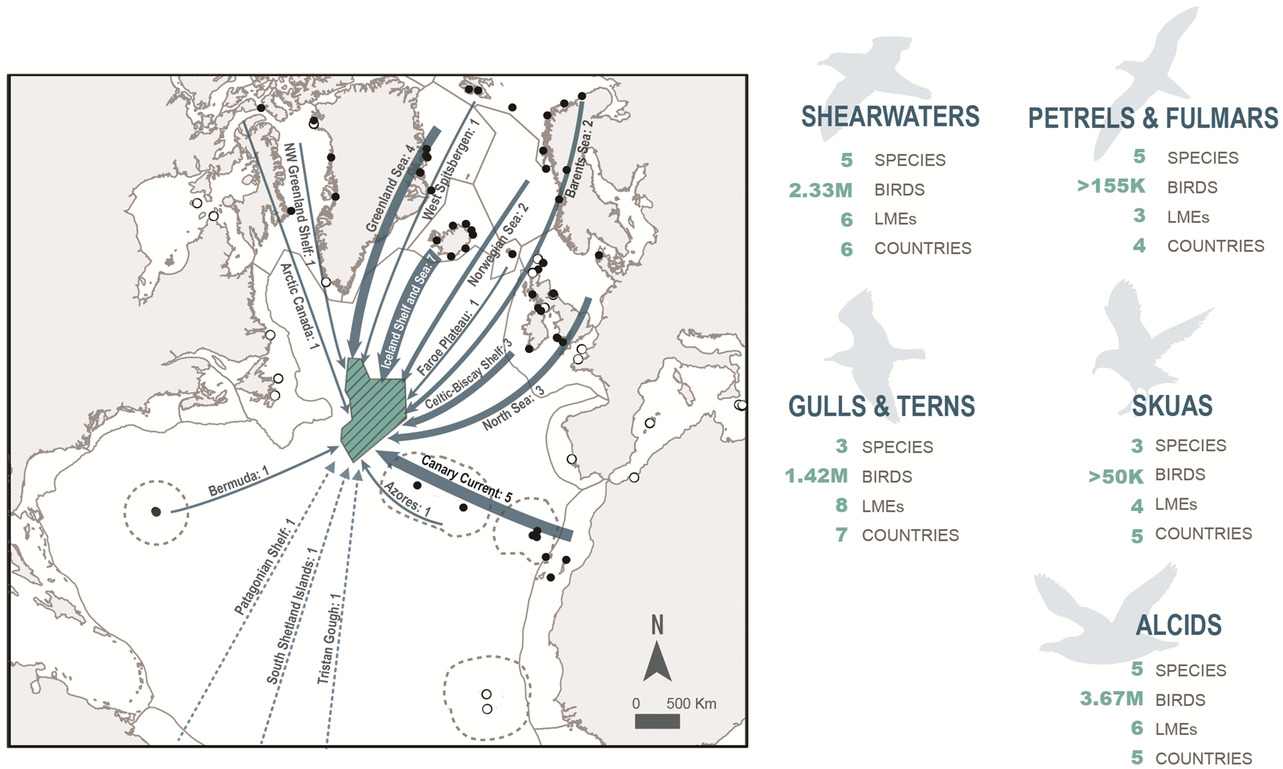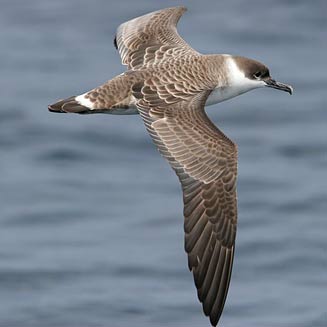
Location of identified hotspot in the middle of North Atlantic and summary information of species groups at the site (from the publication)
Tammy Davies (BirdLife International, Cambridge, UK.) and many colleagues have published open access in the journal Conservation Letters on identifying a “major hot spot” for 21 seabird species, including 10 procellariiform species of fulmars, petrels and shearwaters, in the North Atlantic, that is recommended for Marine Protected Area status.
The paper’s abstract follows:
“The conservation of migratory marine species, including pelagic seabirds, is challenging because their movements span vast distances frequently beyond national jurisdictions. Here, we aim to identify important aggregations of seabirds in the North Atlantic to inform ongoing regional conservation efforts. Using tracking, phenology, and population data, we mapped the abundance and diversity of 21 seabird species. This revealed a major hotspot associated with a discrete area of the subpolar frontal zone, used annually by 2.9–5 million seabirds from ≥56 colonies in the Atlantic: the first time this magnitude of seabird concentrations has been documented in the high seas. The hotspot is temporally stable and amenable to site-based conservation and is under consideration as a marine protected area by the OSPAR Commission. Protection could help mitigate current and future threats facing species in the area. Overall, our approach provides an exemplar data-driven pathway for future conservation efforts on the high seas.”
Read a popular account of the publication: "The hot-spot was of particular importance to Great Shearwater [Puffinus gravius], with 1.5 million or more spending the months of April-September there".

Great Shearwater at sea
Reference:
Davies, T.E., Carneiro, A.P.B. et al. 2021. Multispecies tracking reveals a major seabird hotspot in the North Atlantic. Conservation Letters. doi.org/10.1111/conl.12824 and supplementary material.
John Cooper, ACAP Information Officer, 06 August 2021

 English
English  Français
Français  Español
Español